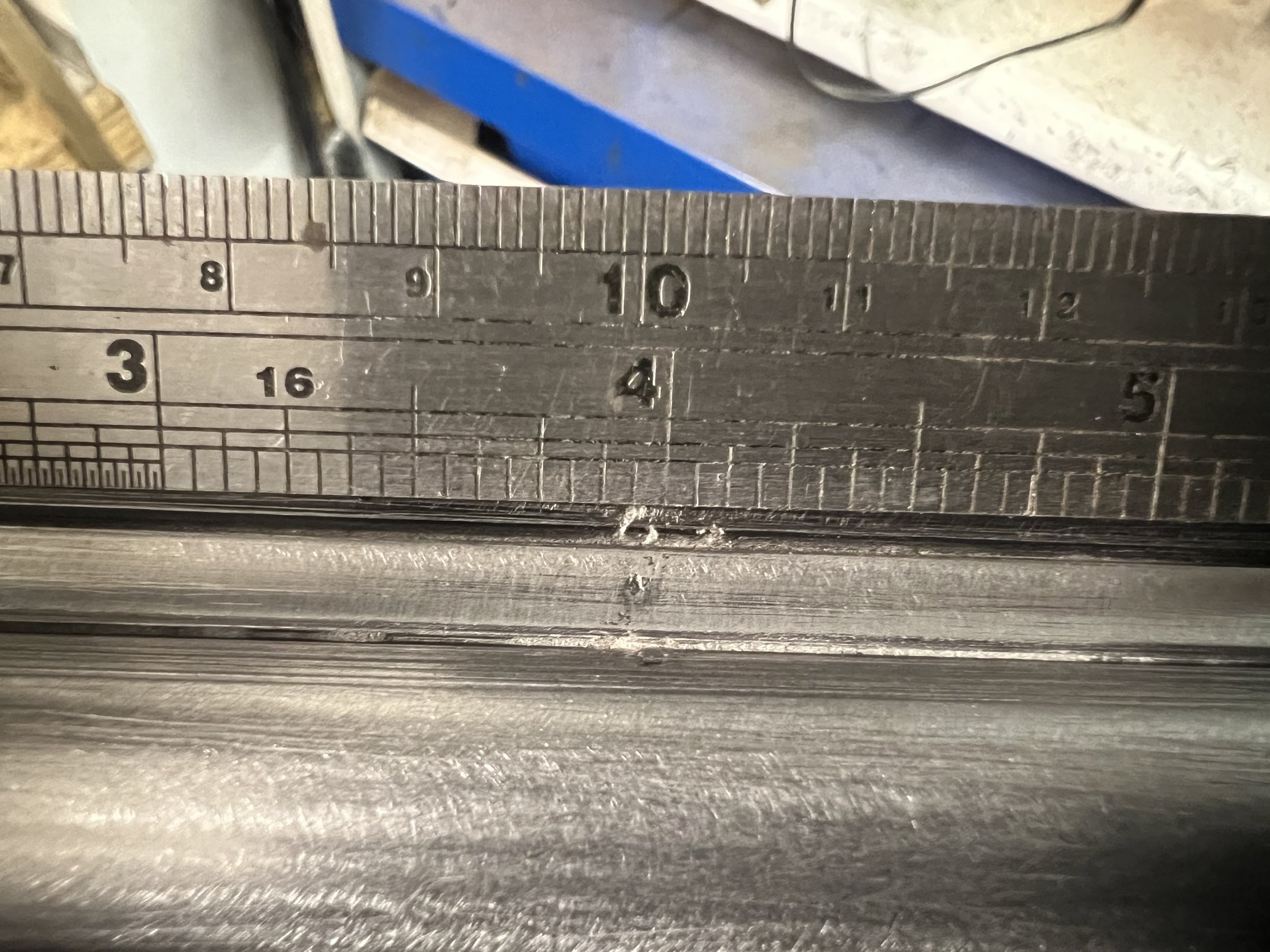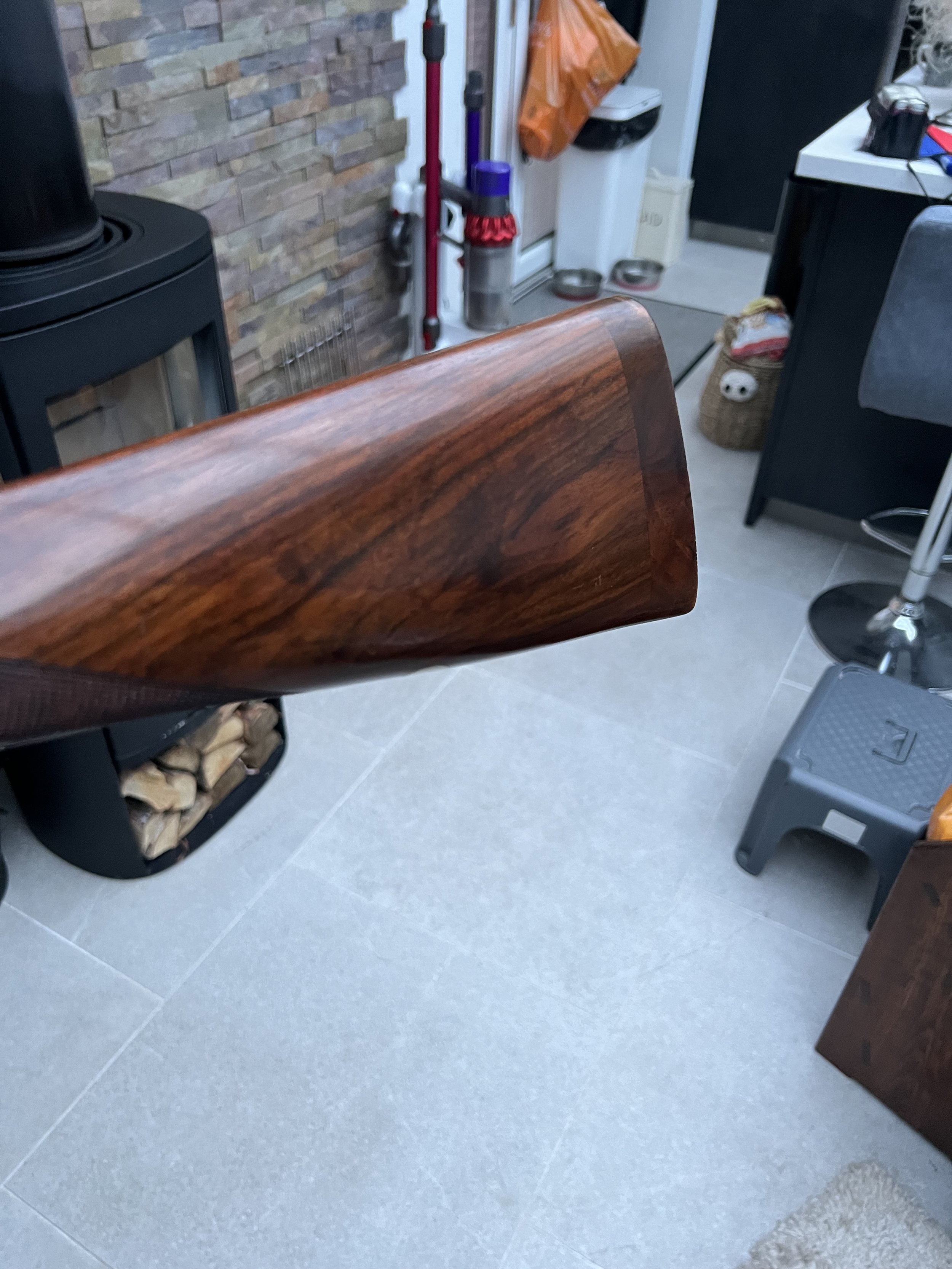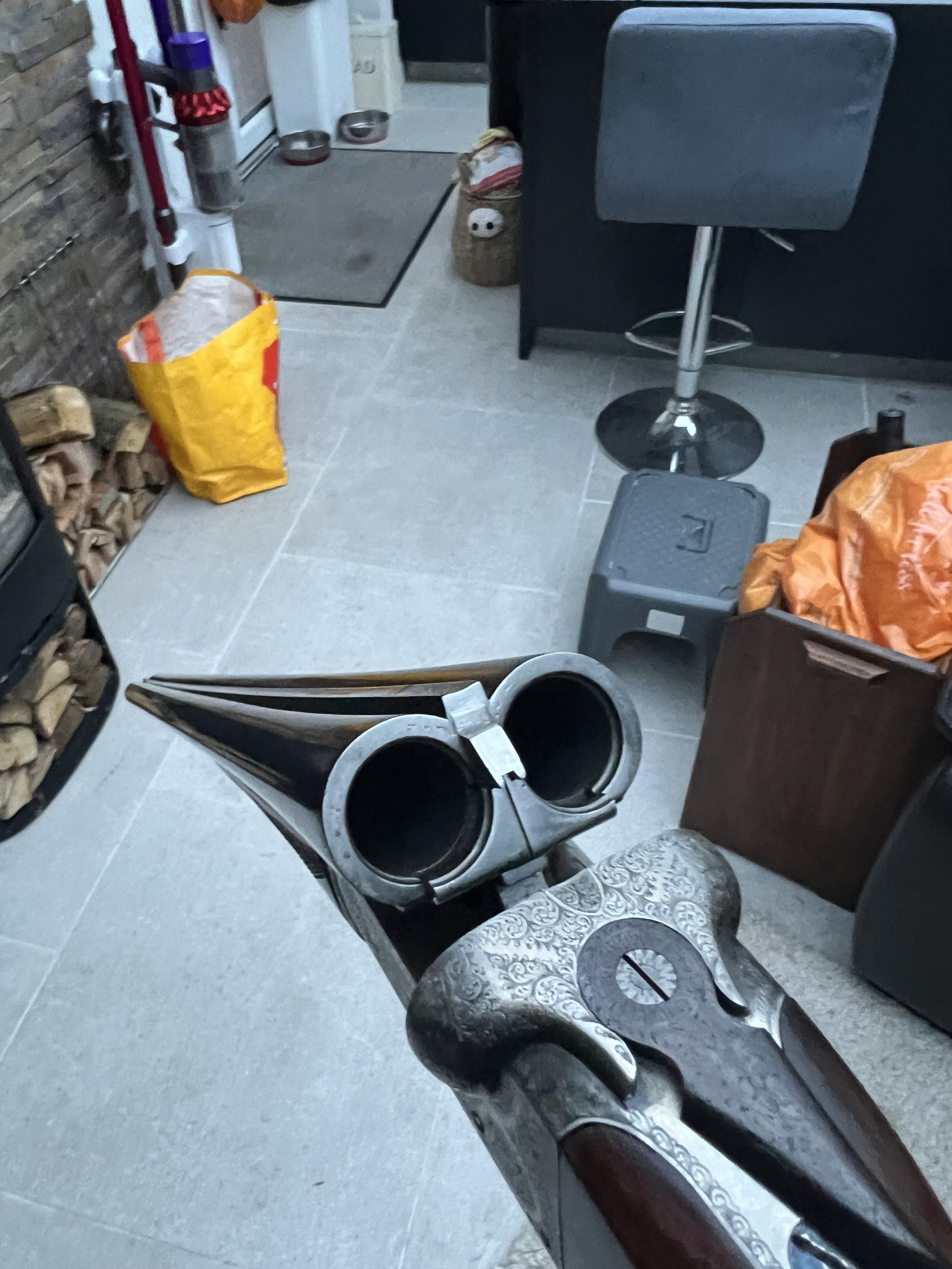A tolley tale
I haven’t seen a Tolley for ages, then one comes along, not the usual big bore fowling piece which Tolley are known for but a rather elegant Boxlock ejector game gun.
On first impressions it is rather crisp and would appear little used, however it needs some work, some essential, some not.
Close inspection reveals the gun has been nitro proofed twice, the first 1904- 1925, last post 1954 and is showing at .729 in both tubes, now measuring.730, .731, barrels are bright and clean, minimum barrel walls are circa .035”, so are plenty thick enough to last a lifetime.
The barrels measure 29”, and are choked at improved cylinder ( .005”) and 3/8 (.015”) so with the wall thickness being robust and the choking relatively open it lends itself rather well to the use of steel cartridges in the future.
It would have been originally 30” and has been shortened, why you may ask? No one would be able to say for definite, however further investigation reveals the possible reason, the barrels have been pitted on the rib approximately 5 inches from the muzzles and just either side of it on the tubes, not badly but there nonetheless, I think this may have been much worse at the muzzles, and is probably why the barrels are short of an inch of tube.
Not only that but in the area of pitting someone has had a ham-fisted attempt to strike them off to remove the pitting, this has been done locally around the pitting rather than blended from breech to muzzle, so upon first glance and feel it looked to be a badly raised dent, but in my view, its a poor ,repair, bear in mind the inside of the barrels show no evidence of any repair or alteration of any kind, given that the barrels have a minimum of 35 thou, re-striking off is not going to be a problem, I estimate the pitting no more then 3-4 thou deep and the walls at the pitting is showing 36 thou, it won’t be a problem.
Small area of pitting
I have seen corrosion like this before and it generally indicates poor storage, not for a year or two, but decades.
As can be seen the pitting is minor and shallow, does not extend under the rib, so gives me no cause for concern in regards to the safety of the gun, now some may advocate the complete removal of the corrosion which is fine in some circumstances, however I think to remove a lot of good material to get rid of a couple of blemishes that are a few thousands deep is unnecessary, they are however unsightly, and will be removable with some careful work, there is no corrosion any where else on the gun.
The other problem with the gun is it is very loose, termed as “off its face”, so re-jointing is required. Now it’s very common for Boxlock to have a non removable hinge pin, this one however is removable so should be a straightforward job of making an oversized pin, however it will not be an easy job removing the cover giving access to the hinge pin, this one is threaded and with no slot for removal, I can get it out, but I definitely do not want to damage it, yes it can be replaced but I would prefer to keep it original. The hook on the barrels can be welded, but I’m not a big fan of welding on guns. The other alternative is to machine out the hook and turn a oversize piece, this can then be finely silver soldered in place thus giving enough material to be smoked and scraped to give full bearing contact and put the gun “back on face”, this is my go to method when the hinge pin is non removable, once done the joint line is virtually invisible, and replaceable if required, still not an easy job.
Action wise there is nothing to do except clean and lubricate, there are a couple of pins (screws) that have damaged heads these will be replaced with new and re engraved to match the originals, but that’s all.
Stock is straight grip 15 1/4” including a 1” wooden extension which is well executed and a very reasonable match, the chequering is still very sharp as are the drop points, finish is oil and in reasonably good condition with the odd small marks from use, it will benefit from a very gentle refinish, forend is again in very good condition and requires no work, except again a very gentle refinish.
The objective is to put the gun back to good useable condition, the rejointing is essential but the pitting on the barrels is not, nor the stock and forend, the barrels, or rather the pitting can I suppose be considered an insurance of sorts, if there’s no pitting then it can’t get any worse, this is only made possible because the barrels are thick enough, so in this case it will be removed.
If we look at the general condition of the gun as a whole the lack of wear all over reinforces my hypothesis that the gun has been little used and stored for some decades this is when the corrosion occurred, the excellent barrel measurements would concur with it being little used.
It will make someone a nice classic game gun, well balanced, in good condition, from a very well respected maker, with excellent barrel measurements.
To be continued………





